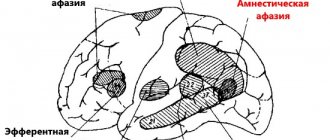Vegetative-vascular dystonia (VSD) is a complex of symptoms from various organs and systems that appear against the background of a disorder in their regulation by the autonomic nervous system. At the moment, VSD is not included in the international classification of diseases, therefore it is considered not a disease, but a complex of symptoms.
VSD of mixed type: what is it?
Vegetovascular (or neurocirculatory) dystonia is a chronic functional disease that includes a complex of syndromes associated with disruption of the autonomic nervous system (ANS). This section of the central nervous system controls the functioning of most internal organs. In this case, many different symptoms arise from the cardiovascular, digestive, respiratory and other systems. VSD is difficult to diagnose and treat, as it often imitates the picture of organic diseases.
This pathology is characterized by a violation of the synchronous functioning of the sympathetic and parasympathetic parts of the autonomic nervous system. Each of these parts has a stimulating or inhibitory effect on certain organs. Which manifests itself in the narrowing or expansion of the lumen of blood vessels, acceleration or inhibition of peristalsis of the digestive organs, strengthening or inhibition of the endocrine and exocrine glands and other manifestations. All this together is called VSD of the mixed type.
The autonomic subsection of the nervous system in the human body functions independently, controlling the work and interaction of all vital systems of the body: cardiovascular, digestive, endocrine. The subsection consists of the sympathetic and parasympathetic systems, the disruption of the coordinated work of which causes neurocircular dystonia.
In cases where violations of one of the subsections are clearly manifested, one can easily determine the hypotonic or hypertonic form of vegetative-vascular dystonia. If it is impossible to identify the predominant symptoms or they appear alternately, mixed type vegetative vascular dystonia is diagnosed.
- ICD 10 code: G24.8
Let's sum it up
Vegetative-vascular dystonia refers to insidious and unexpected pathologies of the human body. Its difference from other diseases is a wide range of effects on the body and incomplete knowledge of symptoms. VSD of the combined type may not have serious manifestations and not pose a threat to life, or it may mask complex pathological processes in the body.
Timely diagnosis and treatment of the disease allows one to eliminate negative symptoms, improve the quality of life and successfully adapt the patient to the conditions of the modern world.
Causes
First of all, the cause of the pathology may be a hereditary predisposition. Against this background, factors that provoke the development of pathology may arise:
- great physical and emotional stress;
- lack of sleep and dietary errors;
- traumatic brain injuries;
- infectious diseases of acute and chronic course;
- exposure to toxins and carcinogens from alcohol and smoking;
- physical effects from radiation exposure;
- hormonal imbalance in diseases of the endocrine system.
People at risk include:
- those who have received a birth injury;
- working in physically or emotionally demanding work;
- emotionally unstable;
- having reduced immunity;
- anomalies of body constitution;
- allergy sufferers, diabetics;
- during the period of hormonal changes (during puberty, pregnancy, menopause, after an abortion or miscarriage).
Attention! Regardless of the reasons, without treatment, VSD can lead to complications such as coronary heart disease, hypertension, gastrointestinal ulcer, bronchial asthma, etc.⛔
Symptoms of vegetative-vascular dystonia of mixed type
There are no permanent symptoms and signs of vegetative-vascular dystonia of the mixed type, since the disease itself is essentially a lack of persistence.
Vivid symptoms indicating the development of mixed type VSD in a patient are:
- sudden jumps in blood pressure that occur during the day;
- pain in the area of the heart - not acute, rather nagging, a feeling of “heaviness” in the heart that appears after stress;
- headaches that appear without obvious reasons may arise as a result of emotional or physical stress;
- arrhythmia;
- intestinal disorders, pain without the ability to determine the clinical picture; disorders of vasomotor functions - may manifest themselves in the form of pallor or redness, chills without objective reasons;
- the occurrence of anxiety attacks, the appearance of flashing dots before the eyes;
- changes in body temperature without good reason, indicating a deterioration in thermoregulation;
- increased sweating;
- the occurrence of disorders in the sexual sphere (anorgasmia, problems with potency);
- emotional instability - mood swings, increased sensitivity, prolonged anxiety due to what is happening;
- asthenia syndrome - increased fatigue, weakness, sleep disturbances, increased pain threshold.
⛔ Sometimes the disease manifests itself in the form of vegetative crises. A crisis is a sharp deterioration in condition - weakness, development of unsteadiness when walking, sweating, nausea, trembling of the limbs, decreased visual acuity and hearing. The usual cause of a crisis is a strong emotional experience.
Complications of the syndrome
All manifestations of VSD are psychosomatic and do not cause organic damage in the body. The functional disorder itself is not dangerous. But if it lasts for a long time and is left untreated, it can cause real diseases.
Possible complications of vegetative-vascular dystonia of mixed type:
- Persistent hypertension. Frequent pressure changes gradually lead to hypertension, which is very difficult to treat.
- Diseases of the gastrointestinal tract. The stomach is most closely connected with the nervous system. With frequent disruptions and tension of the central nervous system, diseases such as stomach ulcers, pancreatitis, and cholecystitis can occur.
- Diseases of the cardiovascular system. VSD puts a serious strain on the heart. If the syndrome is not eliminated, there is a risk of organic pathologies of the heart and blood vessels. A person is depressed
- Depression. Physical symptoms significantly interfere with a person’s quality of life. Neurocirculatory dystonia can develop to such an extent that a person becomes unable to work, social contacts become increasingly difficult for him, and relationships with loved ones deteriorate. All this inevitably leads to depression. If no measures are taken, the sufferer falls into a fairly deep stage of depression, even to the point of suicidal thoughts. The longer an unfortunate person delays seeking help, the more difficult it is to get out of depression.
Can people with this disease be drafted into the army?
In itself, such a diagnosis, if there are no concomitant diseases, is not an indication that a guy is unfit for military service, because mixed-type VSD and the army are compatible. During the commission, the conscript must report that he has veto-vascular dystonia and tell the military doctor about all the symptoms present. It is especially worth emphasizing cardiac signs.
If the clinical picture is too pronounced, especially against the background of increased systolic pressure, then the doctor may recognize the young man as unfit for service and decommission him, recording a diagnosis of any concomitant disease in the health column. But most often, doctors in the army believe that regular physical activity, sleep and nutrition according to a schedule, as well as an abundance of fresh air during training will have a positive effect on the soldier’s health and to some extent relieve him of neurocircular dysfunction.
A disorder of the neurocircular system can cause a noticeable deterioration in the quality of life, but with timely medical consultation, diagnostic examination and adequate treatment, the patient’s condition improves significantly, symptoms go away, which allows the person to lead a full life.
Diagnostics
Diagnosis of VSD begins with a history and physical examination. To make a correct diagnosis, it is necessary to exclude somatic diseases that may cause such symptoms. For this purpose, laboratory and instrumental research methods are used:
- general blood and urine tests, as well as a blood test for hormonal activity;
- ultrasound examination of the thyroid gland and abdominal organs;
- electrocardiogram and ultrasound of the heart to exclude cardiac pathologies;
- magnetic resonance or computed tomography;
- Dopplerography of blood vessels;
- chest x-ray.











